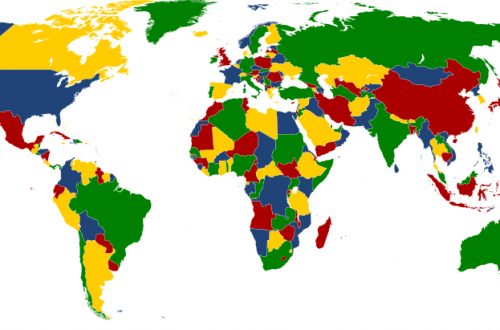After a twenty year hiatus engineered by Sonny Bono, the U.S. copyright office three years ago began releasing books, magazines, films, songs and other works into the public domain every January 1st. When works enter the public domain they can be freely printed, adapted, remixed, recorded or used in any way imaginable. This year’s list items entering the public domain in the United States includes several notable works from 1925, the year the British Broadcasting Company called “the greatest year for books ever.”
Of course, in order to receive such a designation, a number of truly classic works of fiction and nonfiction had to have been published that year. But perhaps even more importantly, the year represented a major moment in modernist fiction and perhaps even in a new understanding of the self — of what it means to be me.
The short story collection In Our Time introduced the world to Ernest Hemingway’s unique literary style as well as his recurring semi-autobiographical character Nick Adams. Virginia Woolf’s Mrs. Dalloway was published to critical acclaim and inevitable comparison to James Joyce’s Ulysses. Gertrude Stein (a central figure in the Parisian art world who hosted a salon where luminaries such as Hemingway, F. Scott Fitzgerald, Ezra Pound, Pablo Picasso, and Henri Matisse would meet) published The Making of Americans.
The New Negro: An Interpretation also appeared in 1925. The New Negro was a groundbreaking collection of essays, poetry, and short fiction by African American writers including Zora Neale Hurston, Countee Cullen, and Langston Hughes. Edited by Alain Locke, the volume gave a clear voice to what would later come to be known as the Harlem Renaissance.
And though few thought much of it at the time, the gem of this year’s releases is almost certainly F. Scott Fitzgerald’s The Great Gatsby. The book sold poorly and only had a short second-printing. One reviewer scathingly wrote, “Find me one chemical trace of magic, life, irony, romance or mysticism in all of The Great Gatsby, and I will bind myself to read one Scott Fitzgerald book a week for the rest of my life.” Another labeled it a “bewildering and tawdry performance.” H.L. Mencken called it “obviously unimportant.” Though Gilbert Seldes of The New Criterion called it “a brilliant work” at the time, few would see it as such until long after Fitzgerald’s death.
Sadly, it was only shortly after Fitzgerald’s death that interest in his Jazz Age novel began to grow. After American entry into World War II, the Council on Books in Wartime distributed over 150,000 paperback copies of The Great Gatsby to the troops, with whom it proved to be very popular. Its reputation continued to grow until it became a standard in the American high school curriculum, joining Moby Dick, Walden, and The Heart of Darkness as classics of the human condition that found no reception in their own time.
Other notable works to be released to the public domain today include:
- Etsu Inagaki Sugimoto’s A Daughter of the Samurai (book)
- W. Somerset Maugham’s The Painted Veil (book)
- Edith Wharton’s The Writing of Fiction (book)
- Theodore Dreiser’s An American Tragedy (book)
- Buster Keaton’s Go West (film)
- Year One of The New Yorker (magazine)
- Irving Berlin’s “Always” (song)
- Jelly Roll Morton’s “Shreveport Stomps” (song)
Click here to explore more of the catalog of works now in the public domain. Or follow one of the links below for a special new year’s gift from Veritas Journal — our very own pdf version of F. Scott Fitzgerald’s The Great Gatsby, 100% legal to download, print, remix, etc.
- Single Page Version of The Great Gatsby
- Double Page Version of The Great Gatsby
header image: “Two Girls in a Rowboat,” by Winslow Homer (1876-80) (cropped). In the public domain





